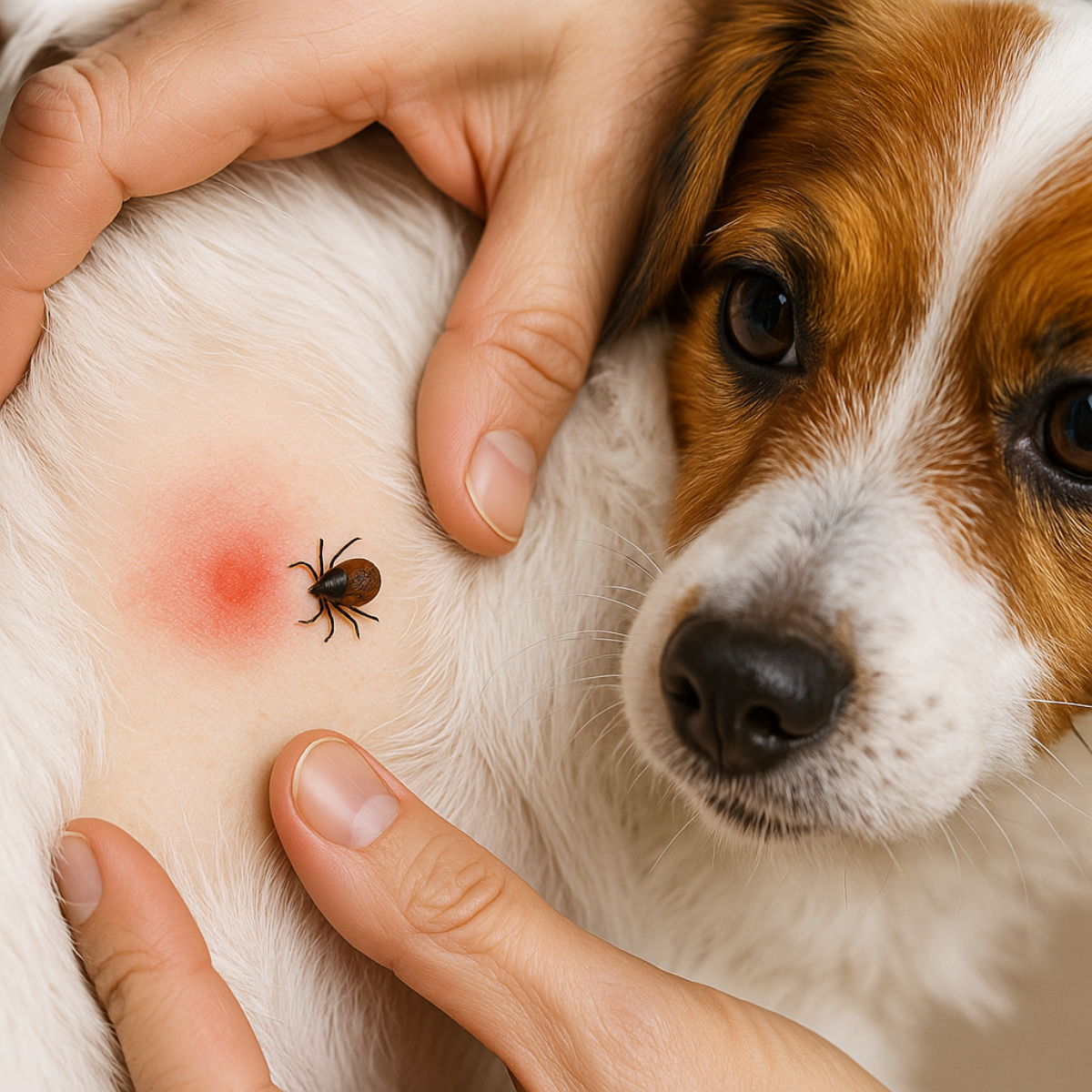![Pierwsza pomoc dla psa – 7 sytuacji, kiedy musisz działać natychmiast! [PORADNIK] - Petto - Premium gear for your dog and cat. European made](http://petto.com.pl/cdn/shop/articles/Pierwsza_pomoc_dla_psa_45f87a51-e6ca-4a42-aaf1-c3bc5e117514.png?v=1745921434&width=1024)
First Aid for Dogs – 7 Situations When You Need to Act Immediately! [GUIDE]
Contents
-
Why is it important to know the rules of first aid for dogs?
-
How to recognize an emergency situation?
-
First aid kit – what to have on hand?
-
Most common emergencies and what to do:
-
Shortness of breath/choking
-
Loss of consciousness
-
Poisoning
-
Haemorrhage
-
Limb injuries
-
Insect or snake bite
-
Stomach torsion
-
-
How to transport an injured dog to the vet?
-
What is worth preparing in advance?
-
Summary + infographic for download
1. Why is it important to know the rules of first aid for dogs?
In crisis situations, time and composure are crucial. Pre-veterinary first aid can save your pet's life, especially if the journey to the vet takes only a few minutes. While it doesn't replace professional treatment, it helps stabilize your dog's condition and prevent deterioration before a veterinarian intervenes.
Animals, like humans, can suffer sudden injuries or illnesses that require a rapid response. Poisoning, choking, gastric torsion, burns, or even simple cuts—these are situations that can occur unexpectedly at home, in the garden, on a walk, or while traveling. Knowing the basic principles of rescue, a caregiver can minimize the animal's suffering, limit the development of complications, and increase the chance of a full recovery .
Moreover, prompt intervention is often crucial to successful treatment. A veterinarian who receives a dog with a wound already dressed or after resuscitation can more quickly initiate appropriate therapy. Therefore, it's important to treat first aid not as optional knowledge, but as a key skill for every responsible dog owner .
2. How to recognize an emergency situation in a dog?
Symptoms such as the following should prompt you to react immediately:
-
shortness of breath, cough, salivation, vomiting,
-
loss of consciousness,
-
tremors or muscle stiffness,
-
heavy bleeding,
-
excessive apathy or aggression after contact with the toxin,
-
swelling of the mouth, tongue, snout (allergic reactions),
-
uncontrolled scratching, rolling, drooling.
3. First aid kit – what to have on hand?
Create a first aid kit for your dog – at home and in the car. It should include:
-
sterile gauze pads and bandages,
-
scissors, tweezers, disposable gloves,
-
disinfectant (alcohol-free!) – e.g. Octenisept,
-
physiological saline (for washing eyes, wounds),
-
electronic thermometer (dog's temperature: 37.5–39.2°C),
-
number of a 24-hour veterinarian (saved in the phone and physically).
4. Most common cases and quick rescue actions
a) Shortness of breath/choking
Symptoms: salivation, coughing, attempts to vomit, blue tongue.
What to do:
-
Remain calm. Do not put your hand in the mouth unless you can see the foreign body.
-
If the foreign body is visible, gently try to remove it with tweezers.
-
For small dogs, turn the dog upside down and shake it carefully.
-
In case of loss of consciousness – start cardiac massage (hands behind the shoulder blades, rhythm 100–120/min).
b) Loss of consciousness
Symptoms: no response to voice, shortness of breath, stiffness or limpness.
What to do:
-
Check if the dog is breathing and has a pulse.
-
If not, begin cardiopulmonary resuscitation (CPR):
-
30 chest compressions,
-
2 rescue breaths (close mouth, blow into nose).
-
c) Poisoning
Symptoms: vomiting, salivation, convulsions, dilated pupils, unsteady gait.
Common poisons: chocolate, xylitol, human medications, rodent poisons, potted plants.
What to do:
-
Do not induce vomiting without consulting your veterinarian.
-
Secure the poison packaging if known.
-
Contact the vet immediately – provide the dog's weight, symptoms, and the suspected ingredient.

d) Hemorrhage
Symptoms: heavy bleeding from the nose, paw, ear or other part of the body.
What to do:
-
Put on your gloves.
-
Apply a sterile dressing and apply pressure for a few minutes.
-
In case of a wound on the paw, apply a pressure dressing above the wound.
-
Do not remove the bloody dressing – just add subsequent layers.
e) Limb injuries
Symptoms: lameness, swelling, reluctance to move.
What to do:
-
Restrict your dog's movement.
-
Do not attempt to set the limb yourself.
-
You can apply a cold compress and secure the paw for transport.
f) Insect bite/sting
Symptoms: swelling of the face, scratching, shortness of breath (anaphylactic reaction).
What to do:
-
Remove the stinger if visible.
-
Apply a cold compress.
-
If a severe reaction occurs, seek veterinary attention immediately. Your dog may need steroids or adrenaline.
g) Gastric torsion
Symptoms: anxiety, unsuccessful attempts at vomiting, bloated and hard abdomen, rapid breathing, weakness.
What to do:
-
This is a life-threatening situation – every minute counts.
-
Do not attempt self-treatment.
-
Go to the nearest hospital immediately – act quickly .
-
Do not administer any medications or fluids during transport.

5. How to transport an injured dog to the vet?
-
If the dog is conscious, transport it in a seat, carrier or on a stable bed (e.g. in Petto Oi).
-
Avoid sudden movements – cover the dog with a blanket and keep it calm.
-
In case of serious injuries, do not lift the dog by its limbs, but use a blanket, towel or a special mat.
6. What is worth preparing in advance?
-
Print a list of emergency symptoms and emergency numbers.
-
Write down the address and telephone number of the nearest 24-hour clinic.
-
Learn the basics of CPR in our First Aid for Pet Owners course.
-
Create a car emergency kit – perfect in combination with the Petto Oi car seat.
7. Summary – Your actions can save lives
Knowing the basics of dog first aid is a must for every owner. Even if you never need to use them, it's better to be prepared. In moments of crisis, seconds, composure, and knowledge of basic steps count.
Some situations, such as poisoning, gastric torsion, or shortness of breath, can develop rapidly and lead to serious complications or even death within minutes. Knowing how to respond appropriately—for example, how to position the dog, how to dress a wound, and when to begin CPR—offers a real chance of saving a life.
Remember that every second can matter. Regularly update your first aid kit, note the locations of 24-hour clinics in your area, and consider taking an animal first aid course. Practical preparation isn't just about psychological comfort—it's about being truly ready to act when your dog needs it most.
FAQ – frequently asked questions
How to provide first aid to a choking dog?
If your dog is choking, remain calm. Don't try to put your fingers in the mouth right away. For small dogs, you can carefully turn them upside down and shake them gently. If the foreign body is visible, try removing it with tweezers. If they lose consciousness, begin CPR.
How to recognize gastric torsion in a dog and what to do?
Symptoms include a bloated, hard abdomen, unsuccessful attempts at vomiting, restlessness, and rapid breathing. Seek veterinary attention immediately—every minute counts. Do not give your dog any food, water, or medications.
What to do if your dog is poisoned, for example, by chocolate or poison?
Do not induce vomiting. Secure the toxic substance container and contact your veterinarian as soon as possible. Provide your dog's information (weight, age) and symptoms. Reaction time is crucial.
What does CPR on a dog look like step by step?
-
Place the dog on its right side.
-
Compress the chest 30 times at a rate of 100–120/min.
-
Blow air through your nose 2 times (closing your mouth).
-
Repeat until breathing is restored or the vet arrives.
Can an injured dog be transported without a carrier?
Yes, but do so carefully. Your dog should lie still, preferably on a blanket or in a car seat (e.g., Petto Oi). Avoid sudden movements and protect your dog from further injury.




 https://petto.com.pl
https://petto.com.pl